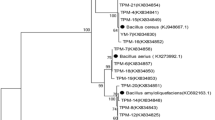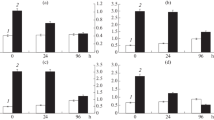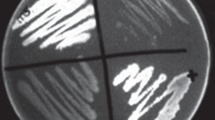Abstract
Seventy-three bacterial strains were isolated from a clay-loam soil and screened for poly-β-hydroxybutyric acid (PHB) production. When grown in a nitrogen-free, carbon-rich medium, 23 strains produced PHB homopolymer. The pseudomonads, which were the majority of the Gram negatives, had a very high frequency (67%) in PHB production, and most of the strains with high productivity of the energy reserve material were placed in this group.
When suspended in Winogradsky salt solution and starved at 21°C, most strains survived very well over the starvation period (150 days and 70 days for two experiments, respectively). The survival ability was strain specific and depended on the growth conditions prior to starvation. The strains capable of producing PHB were not necessarily superior to the others. Accumulation of the energy reserve material had a positive effect on survival of starvation for an individual strain. One strain that did not produce any energy reserve material displayed a prolonged viability under starvation conditions when grown in a nitrogen-free, carbon-rich medium prior to starvation.
Similar content being viewed by others
Author information
Authors and Affiliations
Additional information
Received: 16 February 1996; Accepted: 20 August 1996
Rights and permissions
About this article
Cite this article
Wang, J., Bakken, L. Screening of Soil Bacteria for Poly-β-Hydroxybutyric Acid Production and Its Role in the Survival of Starvation. Microb Ecol 35, 94–101 (1998). https://doi.org/10.1007/s002489900063
Issue Date:
DOI: https://doi.org/10.1007/s002489900063




